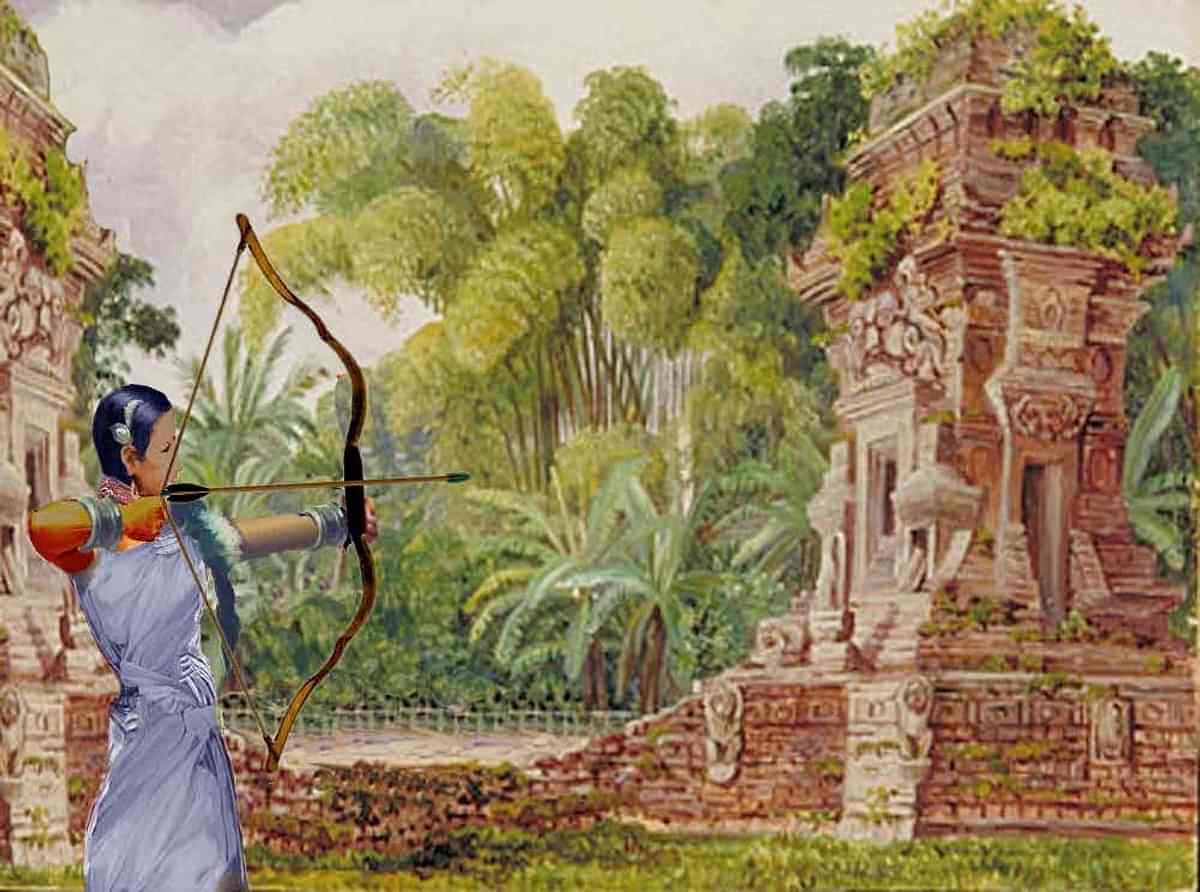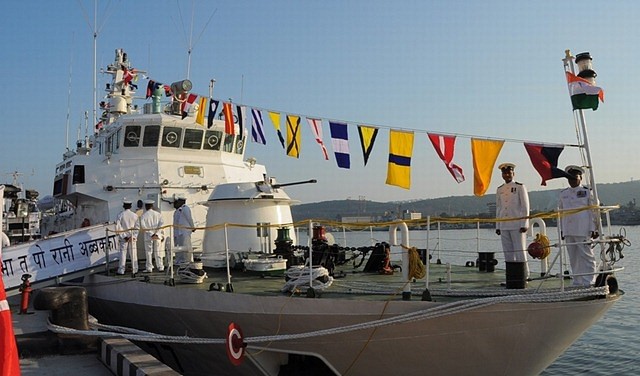More Coverage
Twitter Coverage
Satyaagrah
Written on
Satyaagrah
Written on
Satyaagrah
Written on
Satyaagrah
Written on
Satyaagrah
Written on
Join Satyaagrah Social Media
The Forgotten Story of Rani Abbakka Chowta, the Fearless Warrior Queen of Tulu Nadu

In Dakshina Kannada’s Bantwal taluk, a historian has erected a museum in the memory of a 16th-century warrior queen. The man behind the museum, called Tulu Baduku Museum, is Prof. Thukaram Poojary and his subject is Rani Abbakka Chowta of Ullal.
The only woman in history to confront, fight and repeatedly defeat the Portuguese, Rani Abbakka’s unflagging courage and indomitable spirit are at par with the legendary Rani Laxmi Bai of Jhansi, Rani Rudramma Devi of Warangal and Rani Chennamma of Kittur. Yet, little is written about her or her incredible story in the history books.
Here’s the untold story of Rani Abbakka Chowta, the valiant queen of Ullal
Since the 7th century, maritime trade (in spices, textiles, war horses etc) had flourished between the communities of India’s western coast and the Arabian Peninsula. With an eye on this lucrative trade, several European powers had been trying to discover the sea route to India.
The Portuguese finally became the first Europeans to find a sea route to India when Vasco Da Gama reached Calicut in 1498 after a long voyage.
Five years later, the Portuguese built their first fort at Cochin. This was followed by the establishment of a ring of forts in the Indian Ocean region – in India, Muscat, Mozambique, Sri Lanka, Indonesia, even as far as Macau in China.
This, along with its superior naval technology, put the control of all the spice routes to India into the hands of the Portuguese within twenty years of Da Gama’s historic voyage.
For the whole of the 16th century, Portuguese dominance in the region remains unchallenged by any other European power (the Dutch, the French and the British reached India only at the start of the 17th century).
Trading in the Indian Ocean, which had hitherto been a free trade zone for Indian, Arab, Persian and African ships, now required a paid permit (cartaz) from the Portuguese. The naval superiority of the Portuguese meant that they invariably won against local rulers who rebelled.
In 1526, the Portuguese captured the Mangalore port. Their next target was Ullal, a thriving port town that lay nestled between the verdant peaks of the Western Ghats and the cerulean blue waters of the Arabian Sea.
 |
Ullal was the capital of the Chowta king Thirumala Raya III. Feudatories of the Vijayanagar kingdom, the Chowtas were Jain kings who had originally migrated to Tulu Nadu (a province consisting of present-day Dakshina Kannada district of Karnataka, portions of Udupi and Kasargod district in Kerala) from Gujarat in the 12th century.
As the Chowtas were a matrilineal dynasty, the king’s heir was his young niece, Abbakka. The fiercely independent princess had been trained in sword fighting, archery, cavalry, military strategy, diplomacy and all other subjects of statecraft from a very young age. As such, when Abbakka was crowned the Queen of Ullal, she was deeply aware of the threat posed by the Portuguese presence on the coast and equally determined to resist it with all she had.
Before his death, Thirumala Raya III had arranged a strategic marriage alliance for Abbakka with Lakshmappa Bangaraja, the ruler of Mangalore. As the ruler of Ullal, Rani Abbakka continued to live in her own home even after marriage and the couple’s three children stayed with her. However, the marriage broke down when Bangaraja compromised with the Portuguese.
With an eye on Ullal’s trade (that had flourished under the Queen’s able leadership), the Portuguese had been trying to exact tributes and taxes from Rani Abbakka. Incensed and exasperated at the unfair demands, she refused to accede to the Portuguese demands.
Her ships continued to trade with the Arabs despite attacks by the Portuguese. From Mogaveeras and Billava archers to Mappilah oars men, people of all castes and religions found a place in her army and navy.
Infuriated by her effrontery, the Portuguese began attacking Ullal repeatedly.The first battle took place in the year 1556, with the Portuguese fleet being commanded by Admiral Don Alvaro de Silveira, and ended in an uneasy truce.
Two years later, the Portuguese attacked with a larger force and were able to ransack the settlement at Ullal to some extent. However, Rani Abbakka’s masterful battle tactics and diplomatic strategy (she collaborated with Arab Moors and Zamorin of Kozhikode) pushed them back once again.
During the next battle, the Portuguese army under General Joao Peixoto attacked Ullal and managed to capture the royal palace. However, Rani Abbakka escaped before they could capture her.
Along with 200 loyal soldiers, she raided the Portuguese in the dead of night and killed the general along with 70 of his soldiers. Frightened by the ferocity of the attack, the remaining Portuguese troops fled to their ships.
 |
By this time, the Portuguese had become alarmed about Rani Abbakka’s growing reputation inspiring other rulers. When repeated frontal attacks didn’t work, they resorted to treachery. A series of edicts were passed to make any alliance with the defiant queen illegal. Her husband, Bangaraja of Mangalore, was also warned against sending any aid to Ullal under the threat of burning his capital.
Yet, Rani Abbakka continued to dismiss these rulings with contempt and scorn. The stunned Portuguese now decided to send Anthony D’ Noronha (the Portuguese Viceroy of Goa) to attack Ullal. In 1581, 3000 Portuguese troops supported by an armada of battleships attacked Ullal in a surprise pre-dawn attack.
Rani Abbakka was returning from a visit to her family temple and was caught off guard but she immediately mounted her horse and rode into the battle, leading her troops in a fierce counter-offensive.
Her piercing battle cry – “Save the motherland. Fight them on land and the sea. Fight them on the streets and the beaches. Push them back to the waters”, echoed through winds as she and her soldiers fired flaming arrows at the Portuguese ships.
While many of the ships in the Portuguese armada burnt that night, Rani Abbakka was wounded in the crossfire and was captured by the enemy with the help of a few bribed chieftains. Rebellious till the very end, the fearless queen breathed her last in captivity. However, her legacy lived on through her equally fierce and brave daughters who continued to defend Tulu Nadu from the Portuguese.
A warrior queen who gave her life in defence of her freedom and motherland, Rani Abbakka remained a major thorn in the Portuguese’ side throughout her rule despite their superior military power. This itself speaks volumes about her courage and ingenuity. Yet her splendid story remains largely forgotten by history books.
The good news is that the legendary queen of Ullal continues to live on in the folk culture of the Dakshin Kannada region (through Bhuta Kola and Yakshagana). In the recent years, her story has been gradually coming to public attention.
Dakshin Kannada has been holding an annual celebration in her memory (Veera Rani Abbakka Utsava) for the last few years.
In 2003, Indian Post issued a special stamp dedicated to Rani Abbakka while in 2015, the Indian Navy acknowledged her naval heroics by naming a patrol vessel after her.
 |
And there is also Tulu Baduku museum in Bantwal that displays around 3000 artefacts collected from dusty family attics by Poojary over a period of 20 years.
 Support Us
Support Us
Satyagraha was born from the heart of our land, with an undying aim to unveil the true essence of Bharat. It seeks to illuminate the hidden tales of our valiant freedom fighters and the rich chronicles that haven't yet sung their complete melody in the mainstream.
While platforms like NDTV and 'The Wire' effortlessly garner funds under the banner of safeguarding democracy, we at Satyagraha walk a different path. Our strength and resonance come from you. In this journey to weave a stronger Bharat, every little contribution amplifies our voice. Let's come together, contribute as you can, and champion the true spirit of our nation.
 |  |  |
| ICICI Bank of Satyaagrah | Razorpay Bank of Satyaagrah | PayPal Bank of Satyaagrah - For International Payments |
If all above doesn't work, then try the LINK below:
Please share the article on other platforms
DISCLAIMER: The author is solely responsible for the views expressed in this article. The author carries the responsibility for citing and/or licensing of images utilized within the text. The website also frequently uses non-commercial images for representational purposes only in line with the article. We are not responsible for the authenticity of such images. If some images have a copyright issue, we request the person/entity to contact us at This email address is being protected from spambots. You need JavaScript enabled to view it. and we will take the necessary actions to resolve the issue.
Related Articles
- The Untold Story of the Brave Maratha Warrior Queen Ahilyabai Holkar!
- The forgotten temple village of Bharat: Maluti
- Jagannath Temple administration issues clarification on proposed sale of temple lands
- Birsa Munda: The tribal folk hero who was God to his people by the age of 25
- Dear NSUI, Bhagat Singh And Subhas Chandra Bose Admired Savarkar And His Ideas
- Gita Press Gorakhpur – Bringing Sacred Hindu Texts to Every Hindu Home
- An Artisan Heritage Crafts Village: Indigenous Sustainability of Raghurajpur
- अथ रामचरितमानस प्रकाशन कथा: गीता प्रेस, गोरखपुर ने 1938 से रामचरितमानस का प्रकाशन शुरू किया
- रामचरितमानस एवं उसके अंग्रेजी अनुवाद तथा हिंदी के अकेडमिक्स का दोहरा रवैया
- History books should teach India’s civilisational, linguistic heritage, not unfounded claims: Parliamentary Committee meets to discuss NCERT books
- Why Hindus not claiming their temples back from the Government control: Is pro-Hindu govt will always be in power
- Shri Murudeshwar Temple: Home To The World’s Second Tallest Shiva Statue
- A new symbol of Hindutva pride, Shri Kashi Vishwanath Temple Corridor
- Why India’s temples must be freed from government control
- Unsung Heroine Pritilata Waddedar, Who Shook The British Raj at the age of 21
























